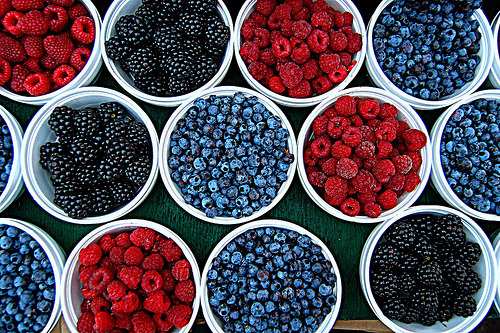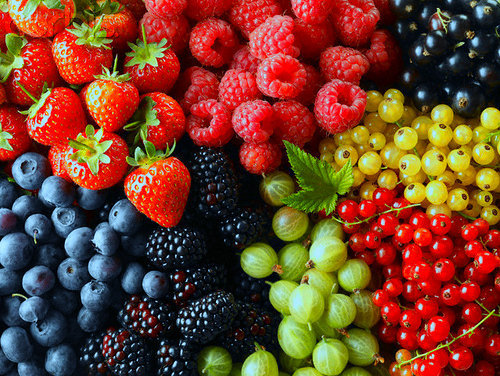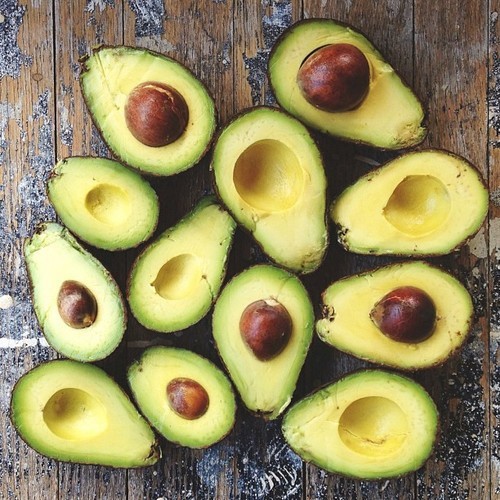Why is a balanced diet important?
A balanced diet is one that provides the body with all the essential nutrients, vitamins and minerals required to maintain cells, tissues and organs as well as to function correctly. A diet that is lacking in nutrients can lead to many different health problems ranging from tiredness and lack of energy to serious problems with the function of vital organs and lack of growth and development.

What is a balanced diet?
A balanced diet needs to contain foods from all the main food groups in the correct proportions to provide the body with optimum nutrition. It should also be made up of the correct number of calories to maintain a healthy weight, and be low in processed foods. Every person is different and hence the correct diet for health may vary from person to person, however by following a diet that is varied, covers all foods groups and is low in undesirable nutrients such as sodium, saturated fats and sugar, you are well on your way to a healthy body.
How to achieve a healthy balanced diet?
To achieve a healthy, balanced diet, it is important to eat at least three meals a day and not to skip breakfast. Each meal should be composed of a variety of foods from each food group and portion sizes should be moderated to control calorie intake. Limiting alcohol consumption is also recommended, the US guidelines being one standard drink per day for women and two for men with two alcohol free days per week.
The 2010 dietary guidelines from the U.S. Departments of Health and Human Services and Agriculture recommend that a diet that is low in saturated and trans fats, cholesterol, added sugar, salt and alcohol should be followed. A diet similar to the DASH (Dietary Approaches to Stop Hypertension or the Mediterranean diet) diet is recommended to fulfil these requirements. Calorie intake should also be balanced with physical activity and sedentary activities such as watching TV should be reduced.
Hint: The MyPlate tool, developed by the USDA (http://www.choosemyplate.gov) is a great tool for obtaining a more personal set of requirements. The tool allows age, gender, weight, height and activity level to be entered to calculate more accurate requirements.
Components of a healthy balanced diet
1. Dairy
This includes cheese, milk and yogurt. Dairy foods are usually high in saturated fat so to reduce fat and calories it is best to choose low fat or fat free varieties. Dairy is essential in the diet to provide calcium for strong bones as well as protein and vitamin D. For those who do not consume dairy products it is essential to use a replacement such as soy or nut based milks or supplement calcium in the diet.
Dietary Guideline: Three cups of reduced fat dairy per day.
2. Protein
This is the main protein containing food group and includes lean meat and poultry with visible fat and skin removed, as well as fish, beans, lentils, peas, nuts and seeds, eggs and soy proteins such as tofu and tempeh.
Meat and poultry are high in iron, whilst legumes are a rich source of fibre and eggs provide a multitude of vitamins and minerals. Fish should be included regularly, particularly oily fish high in omega three fatty acids such as salmon and sardines. Cooking methods should be low fat such as grilling, poaching, dry frying or steaming to minimize extra fat added during the cooking process. It is also important to avoid processed meats such as sausages and sandwich meats where possible as these are high in fat and sodium.
Protein requirements can vary greatly with age, gender and activity level. To find out your personal requirement for protein, use the My Plate tool.
US Dietary Guideline: 5-6 ounces per day depending on age and sex. One ounce of protein is roughly equivalent to one ounce of meat, poultry, pork or fish, ¼ cup cooked beans, 1 egg, 1 tablespoon of peanut butter, or ½ ounce of nuts or seeds.
3. Fruit
Fruit is virtually fat free, low in calories, high in fibre and very nutritious. Aim to include a variety of fruits to get a wide range of vitamins and minerals. This could also include dried fruits 100% and fruit juices, however, it is important to choose unsweetened varieties. Both dried fruit and juices are concentrated sources of calories, so make sure portion sizes are controlled.
US Dietary Guideline: 2 cups (4 servings) per day. One serve is equivalent to ½ cup of fresh fruit, ½ cup of juice or ¼ cup dried fruit.
4. Vegetables
These generally contain the least calories and the most vitamins and minerals, hence they are an excellent option for filling up on. Make sure to include a wide variety in your meals as different vegetables are rich in different vitamins. Try to use low fat cooking methods such as steaming or grilling. 100% vegetables juices can also be included, and are a great way to get a few serves of vegetables into your diet. If you struggle to include enough vegetables in your day to day meals, try adding grated of finely chopped vegetables to mixed dishes such as pasta sauces, burger mince or lasagnes, chances are you won’t even notice the difference.
Us Dietary Guideline: 2 ½ cups (5 servings) per day. One cup is equivalent to one cup of raw or cooked veggies or vegetable juice, but 2 cups of salad greens.
5. Grains
This group is the major carbohydrate source in a balanced diet and includes bread, cereals, pasta and rice. Try to choose whole-grain varieties as these are higher in fibre and contain more B vitamins than white versions. Enriched cereals and breads, for example with iron, calcium or omega 3 can also be a good way to add some extra nutrition to your diet. Avoid sugary or toasted breakfast cereals and sweetened breads made with refined flour as these contain little fibre and are higher in calories and fat.
US Dietary Guideline: 3 ounces or more per day (requirements vary greatly with physical activity levels). One ounce is roughly equivalent to one slice of bread, one cup of cereal, or ½ cup of cooked rice, pasta or cereal.
6. Fats and Oils
Whilst some fat is necessary in our diets for the body to function correctly, it is important that these are the right types of fats. Saturated and trans fats should be minimized as these are unhealthy for the heart. These should be replaces with vegetable fats such as canola, olive, or sunflower oil or spreads. All fats do contain a high amount of calories however, so it is important to keep added fats to a minimum in order to maintain a healthy body weight. Opt for light or low-fat salad dressings and mayonnaise, and use vegetable oils for cooking and baking. Other good sources of unsaturated fats include nuts, avocado and fish.
US dietary guideline: Fat intake shouldn’t exceed 20-35% of daily calories and should be based on poly and mono unsaturated fatty acids. Saturated fats should not exceed more than 7% of calories and trans fats should be avoided. Cholesterol should be limited to less than 300mg/day.
Intake of oil should not exceed 5-7 teaspoons per day, depending on age and sex. Aside from oils, be aware that many other foods have high oil content. For example ½ an avocado contains about 3 tsp of oil, 4 large olives contain about ½ tsp and 2 Tablespoons of peanut butter has about 4 teaspoons of oil.
7. Treats and ‘sometimes’ foods
Foods that do not fit into the above groups are generally considered to provide no or little nutritional benefit and are therefore not required in a balanced diet. Foods such as candy, chocolate, cakes, chips, and other ‘junk’ foods should be avoided. If you do indulge in a treat, try to choose one that is less than 145 calories.
These guidelines can help you achieve a healthy, balanced diet for maximum nutritional benefit. It is also important to read product labels, be aware of your calorie requirements and adjust portions accordingly. You can also read how to diet to learn more about the role of diet in a healthy lifestyle.
Source

















 Weight: 120g
Weight: 120g


 Serving: 7 dates, pitted
Serving: 7 dates, pitted





 Tim Tam Trap) or
Tim Tam Trap) or
 Weight: 18g
Weight: 18g




